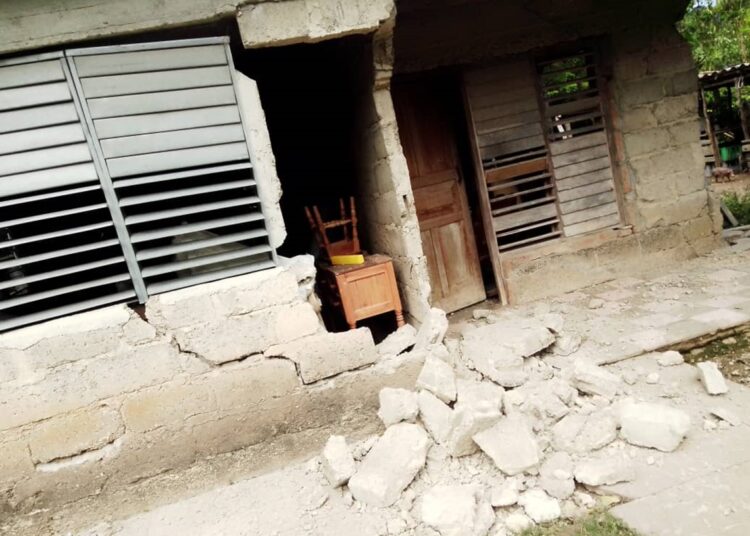Although the exact damage caused by the two strong earthquakes on Sunday in eastern Cuba is not yet known, preliminary reports speak of significant damage to buildings, landslides, and injured people.
In addition, after both telluric movements -one of 6.0 degrees and the other of 6.7 on the Richter scale- some 300 aftershocks were registered, of which 15 were perceptible, according to the National Center for Seismological Research (Cenais).
The main damages are reported in the south of Granma province -the closest to the epicenters of the earthquakes- in municipalities such as Pilón, Niquero, and Manzanillo, although also in other Granma territories, such as the capital, Bayamo, and neighboring Santiago de Cuba.
So far, total and partial landslides, cracks in buildings, landslides, falling poles, and other electrical infrastructure damage have been reported, leaving more than 14 thousand customers without service.
In the case of telecommunications, the state-owned company Etecsa affirmed in its networks that no damages were registered in the networks. However, it acknowledged that “it was difficult to establish communication at critical moments during the tremors”.
Damages to buildings include houses as well as state centers, such as schools, health institutions, and other sectors. Likewise, publications report damage to the Cabo Cruz lighthouse and the Pilón wharf.
Reports of injuries
So far, no deaths have been officially reported, although local media have reported injuries.
In Pilón, preliminary information reports two people with injuries as a consequence of the earthquakes: a 5-year-old minor and a 48-year-old woman; while in the community of La Junta, in Media Luna, an adult and a minor were also injured.
The authorities have asked the population to be “calm, prudent and disciplined” and to comply with the measures established for these cases, among them, to concentrate on the first floor of tall buildings and open spaces.
Desde el Consejo de Defensa Nacional nos comunicamos con las primeras secretarias del Partido en Santiago de Cuba y Granma, provincias afectadas con los recientes sismos.
Se han producido deslizamientos de tierra, afectaciones en viviendas y tendido eléctrico.
1/2
— Miguel Díaz-Canel Bermúdez (@DiazCanelB) November 10, 2024
After the earthquakes, which were felt throughout eastern Cuba and in central provinces of the island, the CENAIS ruled out the possibility of tsunamis and confirmed that a team of experts is evaluating the intensity of these movements according to the damage they caused and is gathering evidence on the ground to prepare a full report on the damage.
These events occur at a time when Cuba is still recovering from the impact of hurricanes Oscar -in the far east- and Rafael -in the west-, as well as from heavy rains and disconnections of its electrical system, in the midst of a severe economic crisis.
According to Cenais, Cuba registered 14 perceptible earthquakes in 2023 and this year 12 had been registered before Sunday’s.
The Oriente geological fault is the main zone of seismic activity in Cuba. Nearly 70% of the country’s earthquakes have been recorded there, including several of the strongest in Cuban history, such as those in Santiago in 1852 and 1932, and Cabo Cruz, in 1992.










